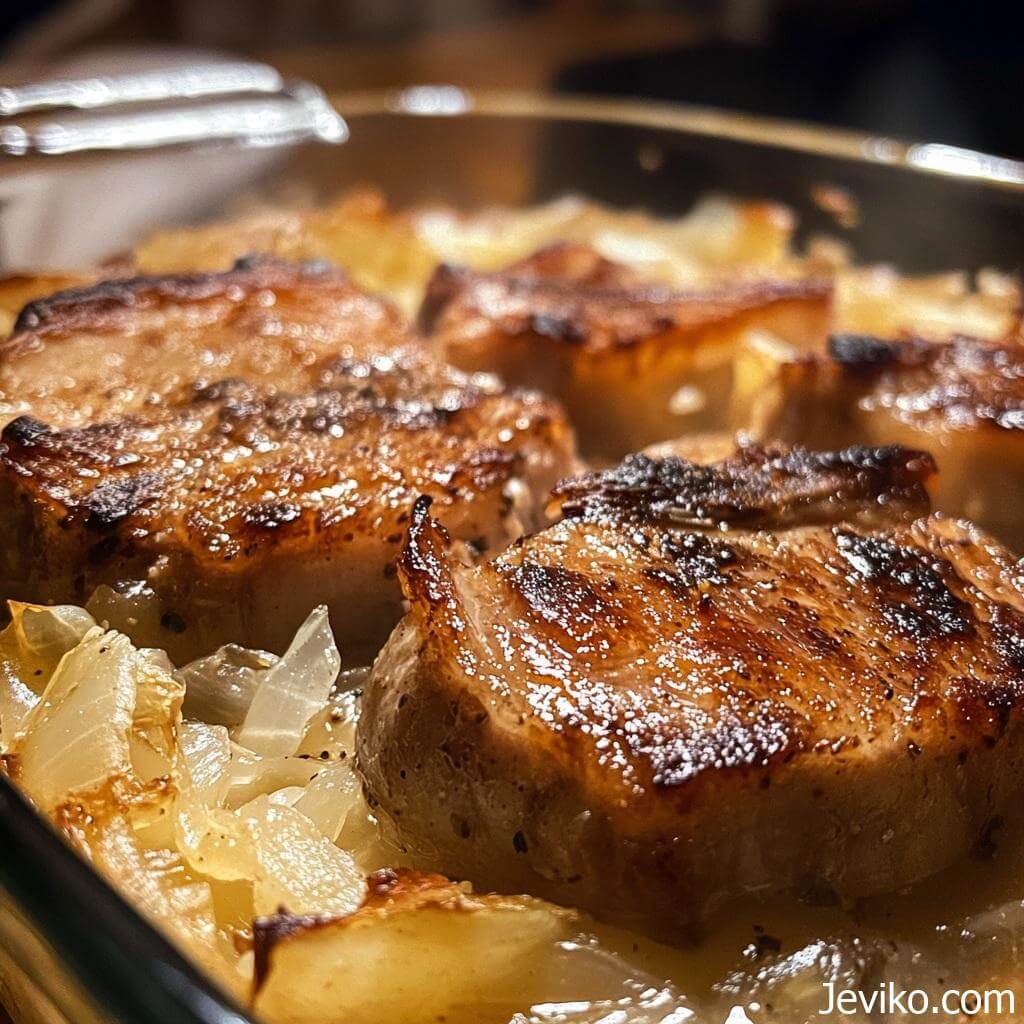
I didn’t plan this one. It started with a warehouse-store run where the pork chops were too good a deal to pass up. You know those moments when you’re already mentally figuring out freezer space while standing in the aisle? That was me, staring at a family pack and thinking about who I could feed. On the drive home I kept circling back to sauerkraut—tangy, warm, a little buttery around the edges—and how the whole kitchen fills with a comforting, savory smell while it bakes. By the time I carried the groceries inside, the menu for dinner had basically written itself.
I’ve made pork chops every which way: skillet, grill, pressure cooker. They’re all great when done right, but the oven version with sauerkraut is the one I lean on when I want everything to be hands-off once it goes into the pan. No flipping every two minutes. No timing three burners. It’s the kind of meal you can tuck into the oven and let the heat do its slow magic while you tidy the counters, set the table, or text a neighbor to come pick up a plate because, yes, there will be plenty.
A few things I’ve learned over the years: rinsing the sauerkraut is optional, but it matters. If yours is particularly briny or tart, a quick rinse under cool water takes the edge off without washing away the good funk. If you love that strong tang, don’t rinse at all—just squeeze out the excess liquid so the pan doesn’t get soupy. I also like to add a sliced apple and an onion, not because I’m trying to be fancy, but because that little bit of sweetness and aroma cozies up to the pork in a way that just works. Caraway seeds? If I have them, I toss in a pinch. They make the whole kitchen smell like a tiny deli.
As for the pork itself, I prefer bone-in rib or center-cut chops that are about 1-inch thick. Thinner chops cook quickly and can dry out before the sauerkraut gets silky. Thick, bone-in chops stay juicy and forgiving, especially with a sear before the oven. If all you can find are boneless, that’s fine—just keep an eye on the temperature and don’t push them past done. Pork is happiest when it reaches 145°F (63°C) in the center and rests for a few minutes.
Below is exactly how I bake this—nothing fussy, just a little browning on the stove and a slow roast with the kraut. If you prefer a one-pan approach, use a sturdy oven-safe skillet or a Dutch oven. If not, brown in a skillet and transfer to a baking dish. Either way, you’ll end up with tender pork, sauerkraut that’s mellowed and rich, and pan juices that beg for mashed potatoes.
Why This Works (and What You Can Tweak)
- Sear for flavor, bake for tenderness. A quick sear builds a crust and deeper flavor. The oven finish keeps the meat moist.
- Onion + apple = balance. The kraut’s acidity softens, the apple melts just enough, and the onion goes sweet and jammy.
- Liquid, but not too much. A small splash of stock, cider, or even water helps everything braise without turning soupy.
- Flexible seasoning. A touch of mustard, a pinch of brown sugar, or caraway seeds are optional—but lovely.
- If you’ve never baked with sauerkraut before, don’t overthink it. It’s basically a built-in seasoning and vegetable side in one. The rest is simply letting heat and time do their thing.
Variations to Keep Things Interesting:
Bacon first: Cook 3 to 4 strips of chopped bacon until crisp, remove, and use the drippings to sear the chops. Crumble the bacon over the finished dish.
Beer-braised: Swap half the stock for a mild lager. It adds a malty depth that loves caraway.
Mustard-cream: Stir 2 tablespoons heavy cream into the kraut after baking, along with extra mustard. Silky and rich.
Smoky paprika + peppers: Add sliced bell pepper or a pinch of chili flakes for color and a little warmth.
Potato layer: Scatter par-cooked potato wedges under the kraut so everything bakes together. (Toss the potatoes with a bit of oil and salt first.)
What to Serve With Pork Chops and Sauerkraut:
Mashed potatoes or buttered egg noodles are classic—they soak up the juices.
Roasted carrots or green beans for color and crunch.
Rye bread to swipe through the pan.
A sharp mustard at the table for anyone who wants an extra dab.
Alternative Cooking Methods
Slow Cooker (Set-and-Forget):
Skip searing if you want (or sear for extra flavor). Add onion, apple, sauerkraut, seasonings, and liquid to the crock, toss. Nestle chops on top. Cook Low 6–7 hours or High 3–4 hours, checking for 145°F (63°C). The chops will be very tender; boneless may be more prone to falling apart—handle gently.
Stovetop (Gentle Simmer):
Use a Dutch oven with a tight lid. Sear chops, build the kraut base as written, then cover and simmer over low heat for 35–45 minutes, turning the chops once. Keep the simmer gentle; hard boiling toughens meat.
Instant Pot (Quick and Cozy):
Sauté to brown the chops and soften onion/apple. Add kraut, liquid, seasonings. Nestle chops. Pressure cook High for 5 minutes (for 1-inch bone-in), natural release 10 minutes, then quick release. Check temp and rest.
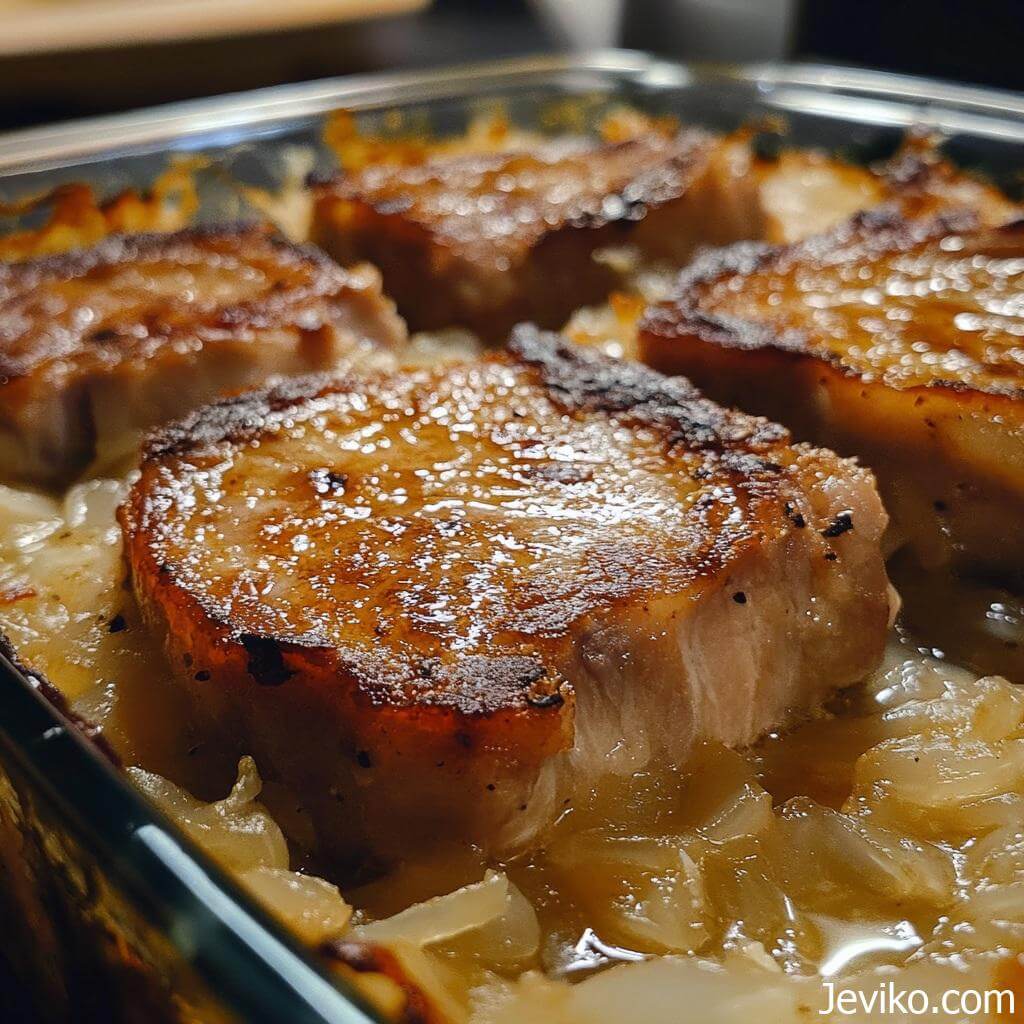
Yield: 4 servings
Active Time: 20 minutes
Total Time: 1 hour to 1 hour 15 minutes (depending on chop thickness)
Equipment: Large oven-safe skillet or Dutch oven (or skillet + 9×13 inch baking dish), tongs, instant-read thermometer
Ingredients:
- 4 bone-in pork chops, about 1-inch thick (rib or center-cut). Boneless also works—watch the timing.
- 2 tablespoons neutral oil or butter (enough to thinly coat the pan)
- 1 large yellow onion, thinly sliced (aim for half-moons)
- 1 crisp apple (like Honeycrisp or Granny Smith), cored and sliced
- 2 cloves garlic, minced (or 1 teaspoon garlic powder if that’s what you have)
- 24 to 32 ounces sauerkraut, drained well (rinse briefly if you prefer a milder flavor; squeeze out excess liquid)
- 1 teaspoon caraway seeds (optional but recommended)
- 1 teaspoon smoked paprika (or sweet paprika)
- 1 to 2 teaspoons Dijon or whole-grain mustard
- 1 teaspoon kosher salt, divided (adjust to taste; kraut can be salty)
- ½ teaspoon black pepper, divided
- ½ cup low-sodium chicken stock or apple cider (a mix is nice)
- 1 tablespoon brown sugar or maple syrup (optional; balances tang)
- 1 tablespoon apple cider vinegar (optional, for extra brightness at the end)
- Fresh parsley, chopped, for serving (optional)
Directions:
- Heat the oven. Preheat to 375°F (190°C). Place a rack in the center.
- Pat the chops dry and season. Use paper towels to dry the pork chops well—surface moisture fights browning. Season both sides with ½ teaspoon salt and ¼ teaspoon pepper. Sprinkle with paprika.
- Sear the chops. Heat the oil or butter over medium-high in a large oven-safe skillet or Dutch oven. When hot and shimmering, add the pork chops in a single layer (work in batches if needed to avoid crowding). Sear 2 to 3 minutes per side until deep golden. Transfer to a plate; they will finish in the oven.
- Soften the onion and apple. Lower heat to medium. If the pan looks dry, add a splash more oil. Add the sliced onion and apple with a pinch of salt. Cook, stirring occasionally, until the onion is translucent and the apple softens, 4 to 6 minutes. Stir in the garlic and cook 30 seconds.
- Build the kraut base. Add sauerkraut to the pan, fluffing with tongs. Sprinkle in caraway seeds if using. Stir in the mustard and brown sugar (if using). Pour in the stock or cider and toss until everything is combined. Taste a strand of kraut—add a small pinch of salt only if needed and a few grinds of pepper.
- Nestle and bake. Create four little wells in the kraut and nestle the seared pork chops in, along with any juices on the plate. Transfer the skillet (or pour the kraut mixture into a 9×13 dish and top with chops). Bake uncovered 25 to 35 minutes, or until the chops reach 145°F (63°C) in the center. Thicker chops may need closer to 40 minutes; thinner boneless chops may be done around 20 to 25 minutes, so start checking early.
- Rest and finish. Move the pan to a cooling rack and rest 5 minutes. If you like a brighter finish, splash a tablespoon of apple cider vinegar over the kraut and gently toss around the chops. Scatter with parsley.
- Serve. Spoon kraut, onion, and apple onto plates, top with a chop, and drizzle with pan juices.
Notes, Swaps, and Real-World Tips:
- Choosing pork chops: Bone-in is forgiving and stays juicy. Boneless works with tighter timing—pull them as soon as the thermometer hits 145°F (63°C). If your chops are thinner than 1-inch, reduce oven time and start checking at 15 to 18 minutes.
- Sauerkraut intensity: For strong, briny kraut, rinse under cool water for 5 seconds, squeeze dry, and taste. If it’s still bold (and you want it milder), rinse once more. For full tang, skip the rinse and simply drain and squeeze.
- Seasoning balance: Kraut can carry salt. That’s why the recipe seasons the meat first and seasons the kraut to taste later. If you accidentally oversalt, a splash of cider, stock, or a squeeze of lemon evens things out.
- Mustard and caraway: These add a deli-style aroma. If you don’t have caraway, skip it. If you love mustard, add an extra teaspoon to the kraut.
- Sweetness: Brown sugar or maple isn’t traditional for everyone, but I like how a spoonful softens the tang without making the dish sweet. Feel free to leave it out.
- Liquid choice: Chicken stock is subtle and savory. Apple cider leans autumnal. A dry white wine is also nice—use ⅓ cup and add a little stock or water if the pan seems dry.
- Searing vs. not searing: Searing adds flavor and color, but if life is busy, you can skip it and go straight to the oven. Just extend the bake time by 5 to 10 minutes and don’t forget to check the temperature.
Common troubleshooting:
- Dry chops: Overcooked. Next time, check earlier and pull at 145°F (63°C), then rest. The carryover heat finishes the job.
- Watery pan: The kraut wasn’t squeezed dry or too much liquid was added. Simmer the pan on the stovetop for a few minutes after baking to reduce.
- Kraut too sour: Stir in a knob of butter and a splash of cream or a few spoonfuls of mashed potatoes. It sounds odd, but it works.
Make-Ahead, Storage, and Reheating:
- Make-ahead: Assemble the kraut base (onion, apple, kraut, spices, liquid) up to 24 hours in advance and refrigerate. Sear the chops right before baking, nestle into the chilled kraut, and bake—add 5 extra minutes since it’s cold from the fridge.
- Leftovers: Cool, then store in airtight containers for up to 4 days in the refrigerator.
- Reheat: Warm gently in a covered skillet over low heat with a splash of stock until hot. The microwave works too—cover and heat in short bursts. Avoid hard reheating; that’s when pork dries out.
- Freezing: The kraut base freezes well for up to 2 months. Pork chops can be frozen cooked, but they reheat drier than fresh—if freezing, submerge them in the kraut and juices to protect them.


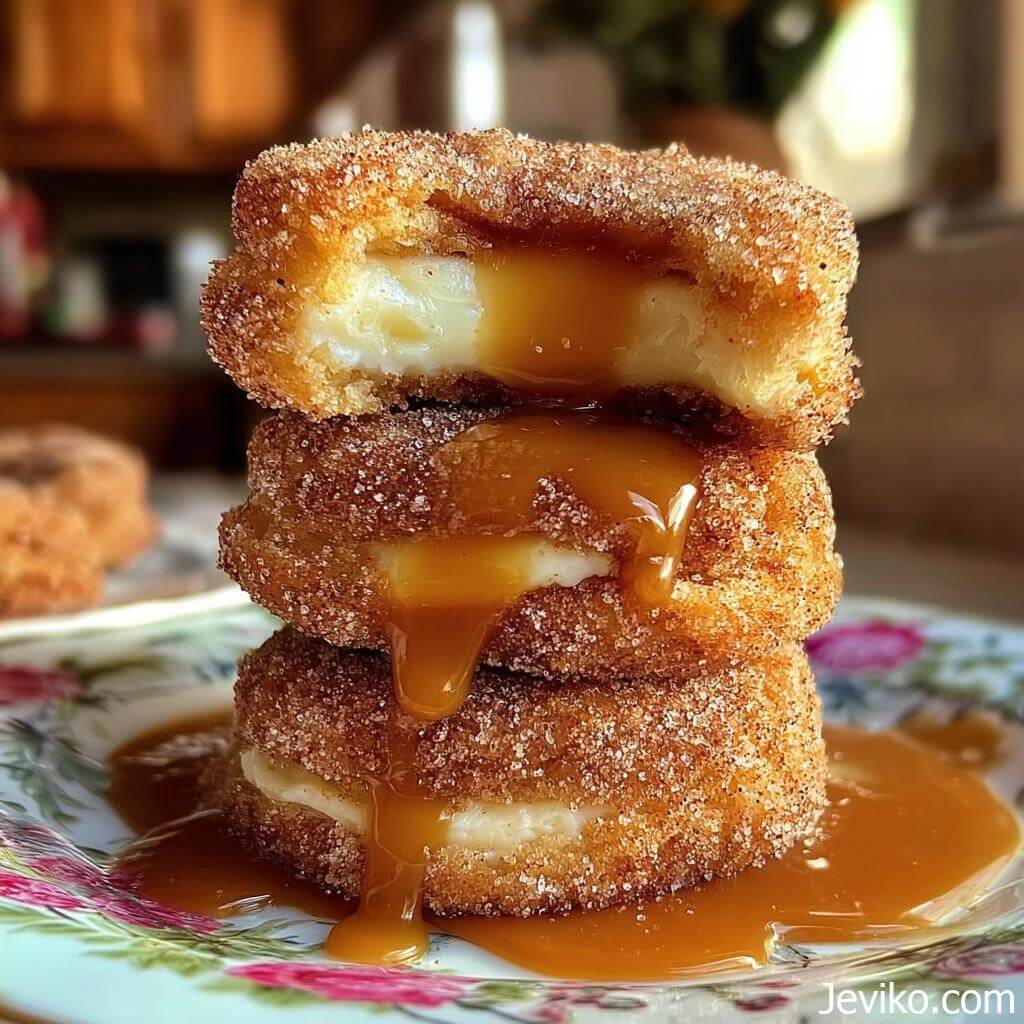

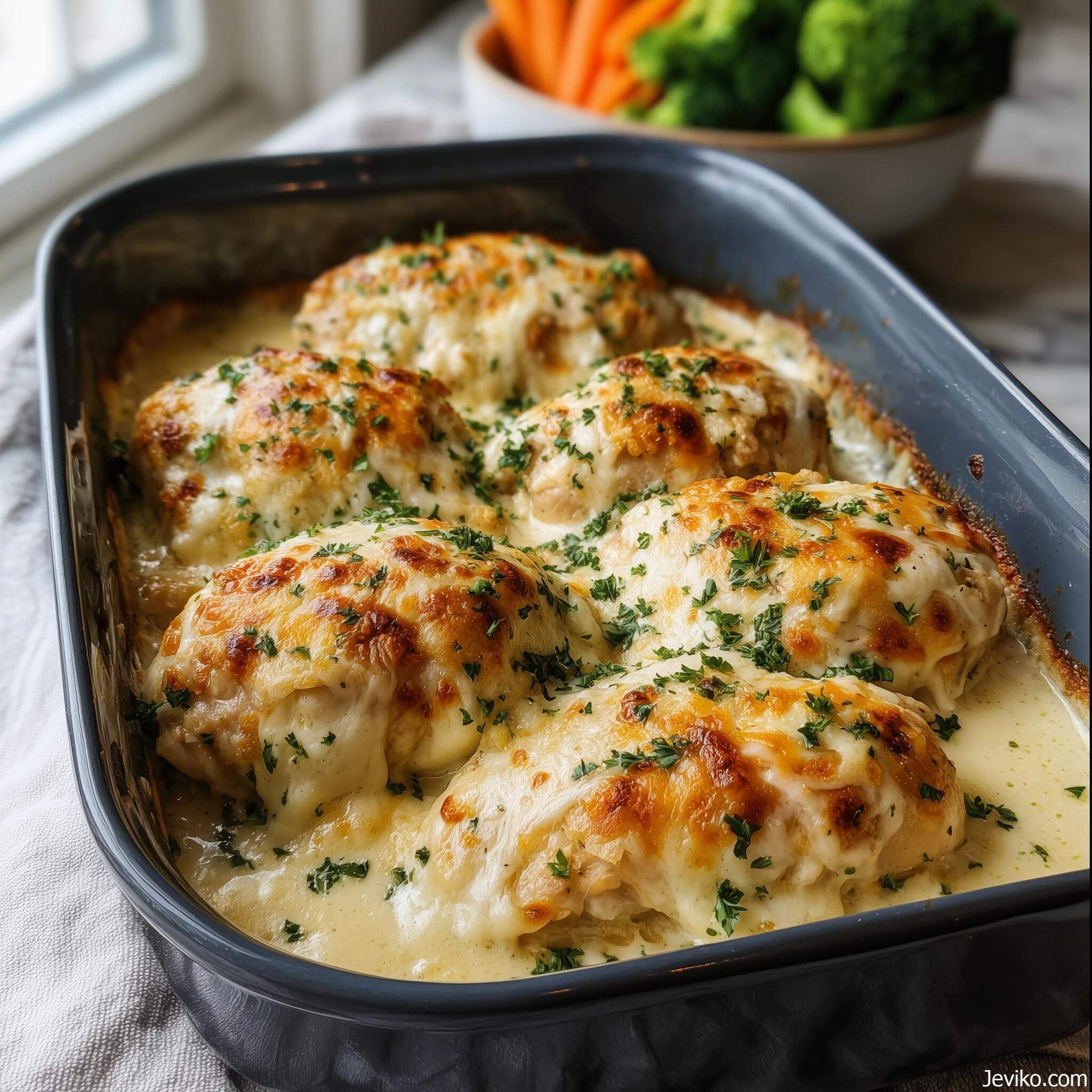

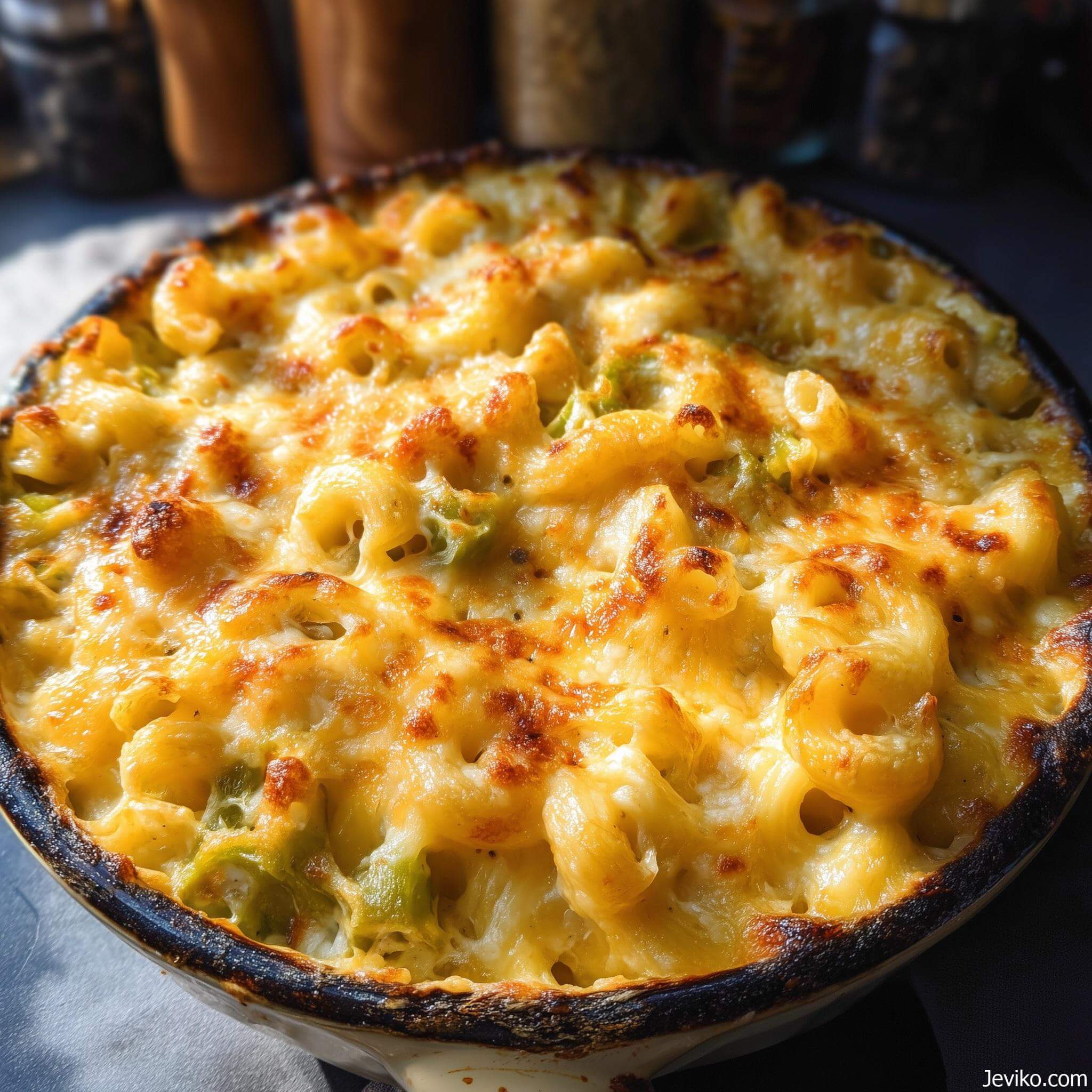
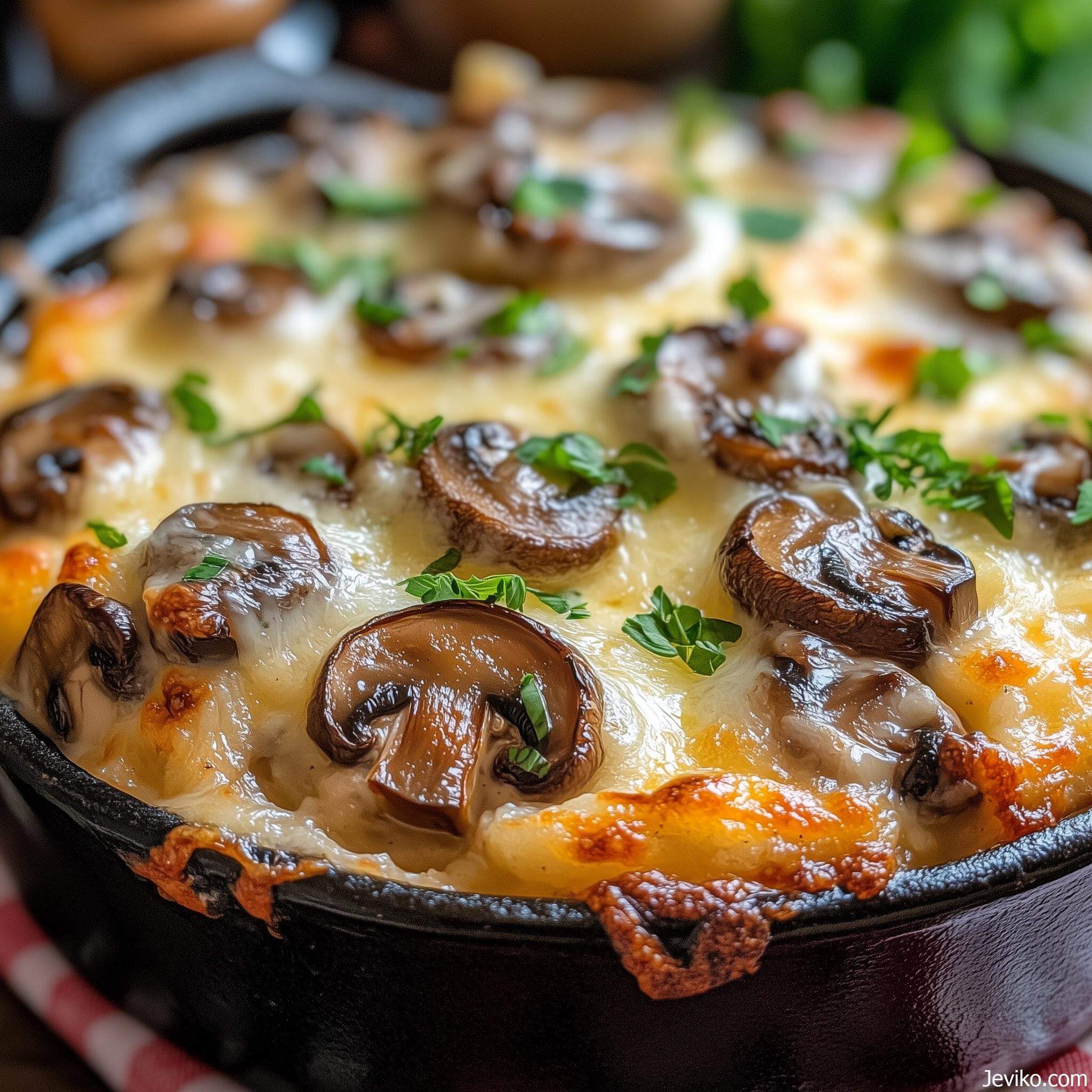
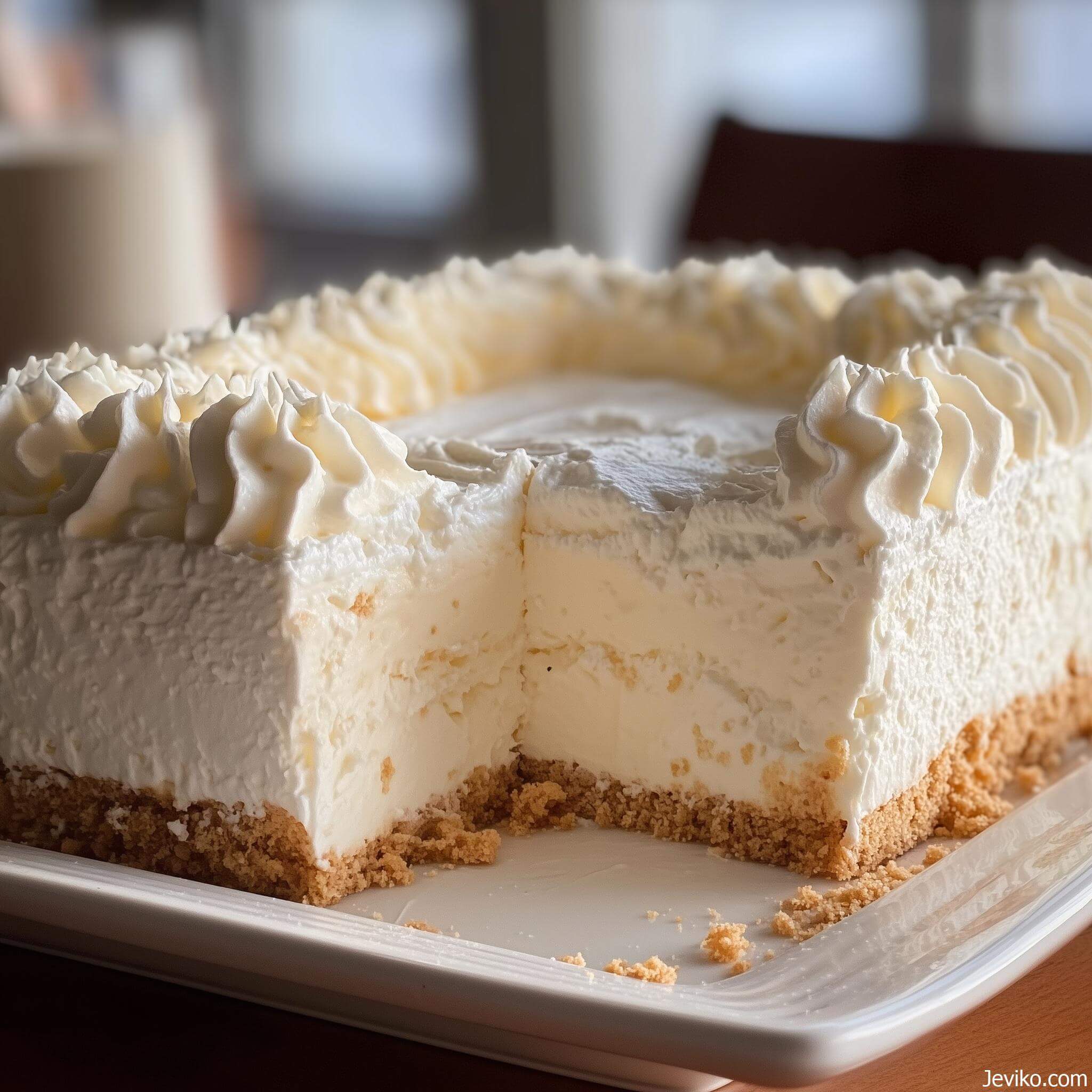
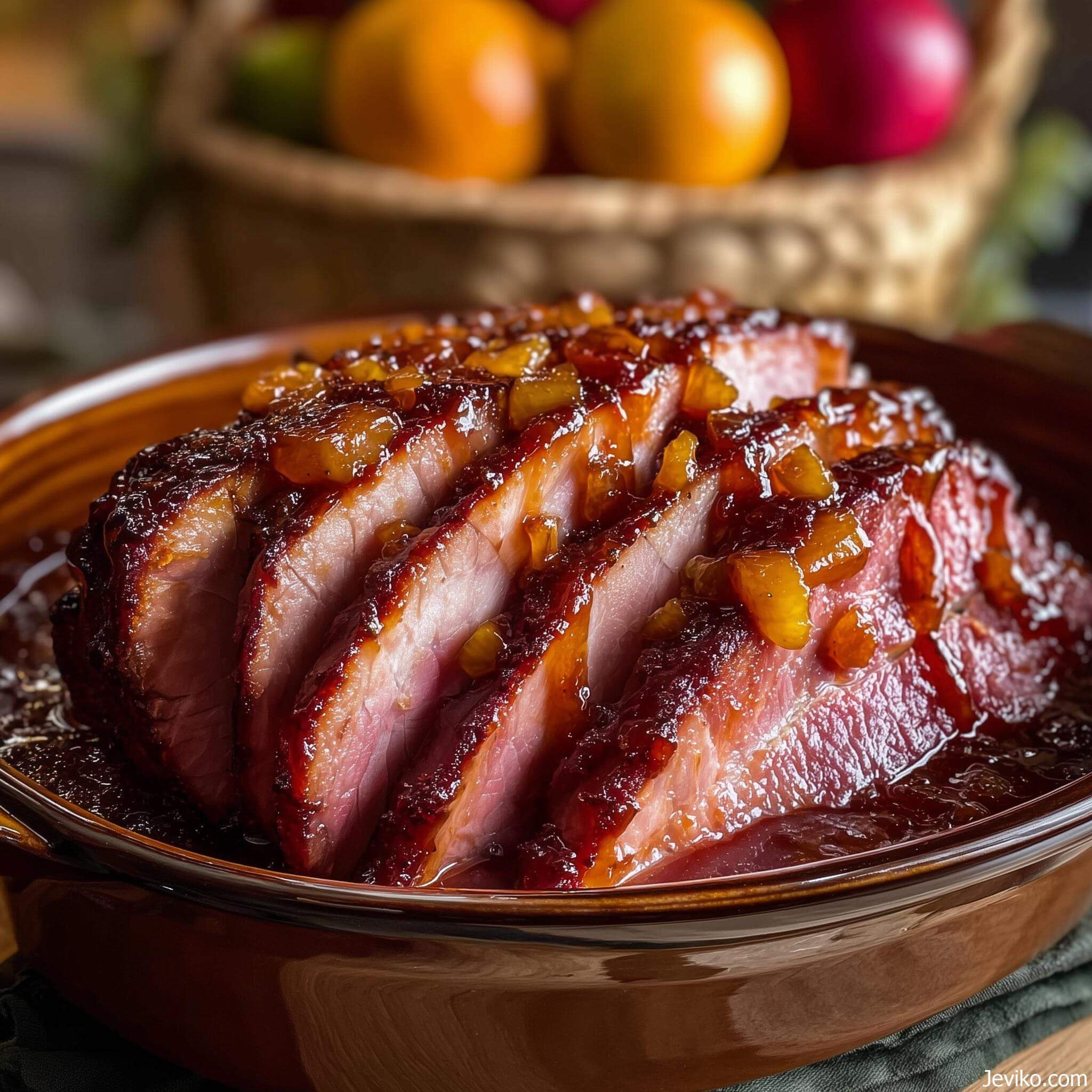
Great recipes and tips. Thank you so much.